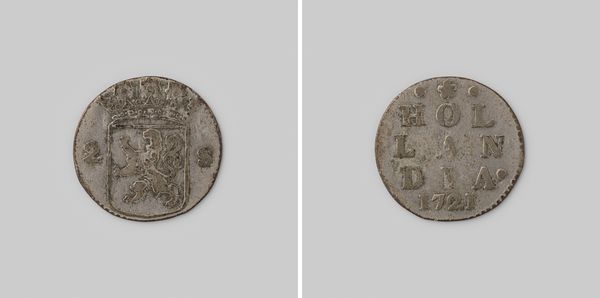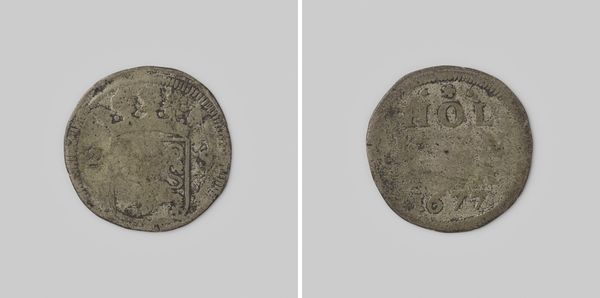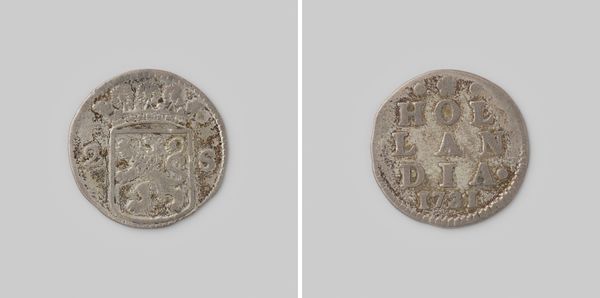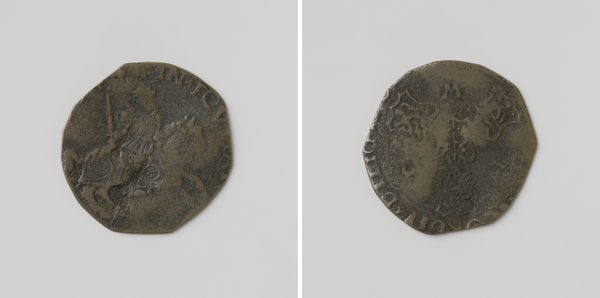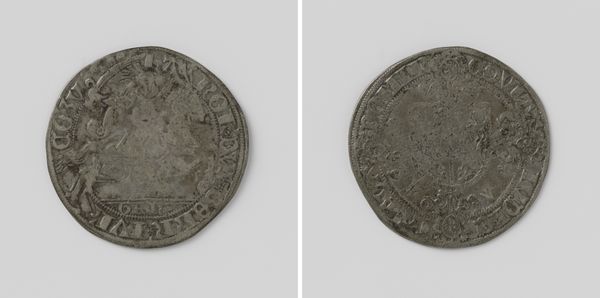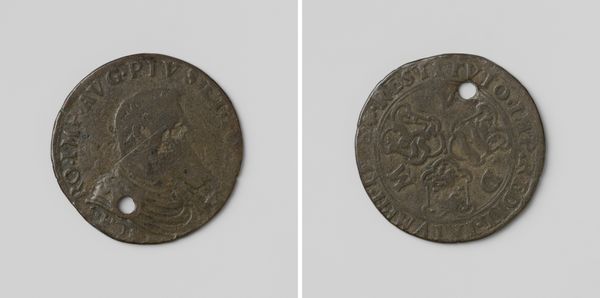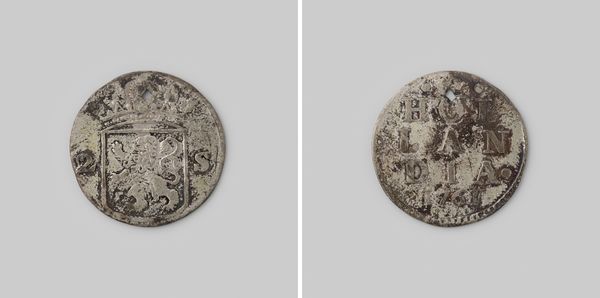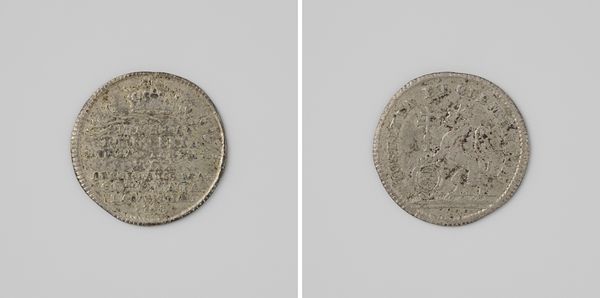
print, metal, relief, sculpture
#
portrait
# print
#
metal
#
relief
#
geometric
#
sculpture
#
history-painting
Dimensions: diameter 2.8 cm, weight 4.26 gr
Copyright: Rijks Museum: Open Domain
This is a Nijmeegse ruiterschelling, a coin made of silver in the city of Nijmegen in 1690 or 1691. As a material, silver has always held value, both literally and symbolically. The relative softness of the metal makes it perfect for stamping with intricate designs. Here we see a knight on horseback on one side, and the city’s coat of arms on the other. To create such a coin, a silversmith would have first alloyed the raw material, then heated and hammered it into a thin sheet. From there, they would have cut out blanks, and finally stamped each one with a die engraved in reverse. The coin is more than just a symbol of wealth and power; it also speaks to the labor and skill required to produce it. The silversmith's expertise, the miner's toil, and the state's authority are all embedded in this small object. Considering the historical context of production really brings its social significance into focus, and challenges any distinction between craft and fine art.
Comments
No comments
Be the first to comment and join the conversation on the ultimate creative platform.
